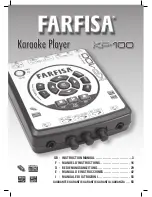
Installation
Variomat Basic
—
22.07.2020 - Rev.
A
English
—
13
"EC" expansion lines
Because of the degassing function, you must install two "EC" expansion
lines.
•
One line to the system for the gas-rich water.
•
One line to the system for the degassed water.
The "DN" nominal connection diameter for the "EC" expansion lines
must be designed for the "P
0
" minimum operating pressure.
Calculation P
0,
see chapter 8.2 "Variomat switching points" on page 17 .
The "DN" nominal connection diameter applies to an expansion line
length of up to 10 m. Beyond this length, select the next larger
dimension. Integrate with the "V" main flow volume of the system.
Viewed in the system flow direction, the gas-rich expansion line must be
connected upstream of the expansion line transporting the degassed
water.
Ensure that particulate dirt cannot enter and thus creating an overload
of the "ST" dirt trap. Connect the "EC" expansion lines according to the
following installation variants.
Type
Minimum operating pressure p
0
(bar)
DN25
DN32
VS 1
0,5 - 2,0
X
---
VS 1
≥ 2,0
---
X
Note!
The water temperature at the connection point of the "EC"
expansion lines must be in the range of 0 °C to 70 °C. The use of
auxiliary tanks does not increase the range of use. Because the
thermal protection is not ensured due to the flow during the
degassing phase.
7.3.4.2
Make-up line
If you don't connect the automatic water make-up, you must close the
connection of the "WC" make-up line with a R ½ " blind plug.
•
Prevent a potential device fault by ensuring manual water make-
up.
•
Install at least one "ST" dirt trap with a mesh size ≤ 0.25 mm close
upstream to the make-up solenoid valve.
–
Install a short line between the "ST" dirt trap and the
solenoid valve.
Note!
Use a pressure reducer in the "WC" make-up line if the idle
pressure exceeds 6 bar.
Note!
If you use make-up water from the potable water system, you
may need the Reflex Fillset for the "WC" make-up line, see
chapter 4.6 "Optional equipment and accessories" on page 5 .
•
Reflex make-up systems such as Reflex Fillset are designed
for make-up lines with a flow rate < 1 m³/h.
7.3.5
Fitting the thermal insulation
Install the optional thermal insulation (2) around the primary tank (1)
and close the insulation with the zip fastener.
Note!
For heating systems, insulate the primary tank and the "EC"
expansion lines against heat loss.
–
Thermal insulation is not required for either the primary
tank top or the secondary tank.
Note!
On-site, install thermal insulation when condensate forms.
7.3.6
Fitting the level sensor
ATTENTION
Damage to the pressure load cell due to unprofessional installation
Incorrect installation may result in damage to the "LIS" level sensor,
malfunctioning and incorrect measurements from the pressure load
cell.
•
Comply with the instructions regarding the installation of the
pressure load cell.
The "LIS" level sensor uses a pressure load cell. This pressure pick-up is
to be installed after the primary vessel has been placed at its final
position, see chapter 7.3.3 "Tank installation" on page 11 . Comply with
the following instructions:
•
Remove the transport securing device (squared timber) at the
vessel base of the primary vessel.
•
Replace this transport securing device with the pressure load cell.
–
In the case of a vessel volume of 1000 l (Ø 1000 mm) or
more, use the supplied screws to attach the pressure load cell
at the vessel base of the primary vessel.
•
Avoid shock-type loading of the pressure load cell by, for example,
subsequent alignment of the vessel.
•
Use flexible hoses to connect the primary vessel and the first
secondary vessel.
–
Use only the supplied connection sets, see chapter 7.3.3
"Tank installation" on page 11 .
•
Perform a null balancing of the filling level when the primary vessel
is aligned and fully emptied, see chapter 8.6 "Parametrising the
controller in the Customer menu" on page 18 .
Standard values for level measurements:
Primary vessel
Measuring range
200 l
0
–
4 bar
300
–
500 l
0
–
10 bar
600
–
1000 l
0
–
25 bar
1500
–
2000 l
0
–
60 bar
3000
–
5000 l
0
–
100 bar














































